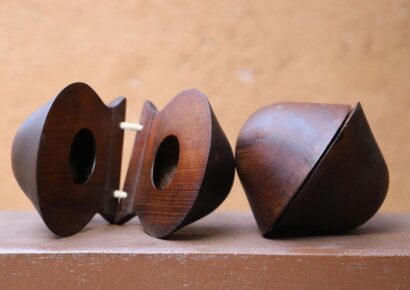A field recording is defined as any audio produced outside a recording studio.
Field recordings in music
However, in a production context, most people generally refer to field recordings as nature and atmospheric sounds. For my debut album Womb I was largely inspired by Jon Hopkins’ process on his album Music for Psychedelic Therapy, in which he used many field recordings from his time living in a cave in Ecuador.
Music for Psychedelic Therapy
In an episode of music-production podcast Tape Notes, he explains that his intentions were to include the energy of the land in his songs, so “every track sounds like a place”. Thus, he used natural spaces as a way of processing, in which he often played instruments or recordings of instruments in natural spaces, then recorded that again with iPhone and other hi-fidelity recorders. Similarly, I wanted to create a strong sense of place in my music and place the listener in nature. Nature for me has always been a place of healing, clarity and re-birth, thus it was appropriate to incorporate field recordings in this album.
After learning that Hopkins and other producers such as Tourist utilized iPhone recordings in their songs, I also used my iPhone to record atmospheric samples rather than buying an expensive field recorder.
In my song “Womb Heal 285hz”, I have included an iPhone recording taken at Delatite Arms Reserve, during a camping trip at Lake Eildon. Proximity is everything with an iPhone, so I made sure to walk right up to the lake and keep a healthy distance from the birds.
As it was recorded with iPhone, I had to use quite aggressive EQ cuts, more than what you would normally need, cutting out a lot of 2-5K to remove the digital harshness and tininess from the iPhone, as well as the piercing bird chirps. I also applied Soundtoys’ EchoBoy for accented sixteenth note delays so the recording felt more dream-like.

Soundtoys EchoBoy & Fab Filter Pro-Q 3
I also overlaid this recording with snippets of audio taken from VHS home videos of my family and I swimming in a pool in the Philippines. In these home videos there was plenty of distracting and fluctuating background noise, so I used iZotope RX noise reduction and overlaid this with a consistent tape noise sample. This helps to mask any noise leftover after treating the sound!
I really wanted this intro to elicit feelings of memories intertwined and create a sense of being in a “womb”, so it made sense to combine field recordings of my childhood and of bodies of water in Australia and the Philippines.
Other field recordings include samples I sourced online from a creative commons documentary online featuring the T’boli tribe, which I used as a percussive element in my song “Closure”. I specifically used splices of jingling loom weaver sounds, in which I had to cut out a lot of low end and boost 20K for air as the sample was quite dull.
I also sampled this documentary using the beautiful vocals of a T’boli tribe woman singing. I dropped the vocal into a sampler in Ableton, selected the “Slice” mode function, and drew in the notes for a melody.
I then treated it with EQ, added compression, applied EchoBoy (again!) for delay. I also used a moving low pass filter (LPF) and added lots of reverb using Valhalla’s Shimmer as a return auxiliary track.
I am about to go on a trip to the Philippines in late December, so I am really excited to continue this process of recording the land and memories. I will be using these recordings in my forthcoming EP which I have just begun producing.
Keep up with Mayari and listen to Womb here.







